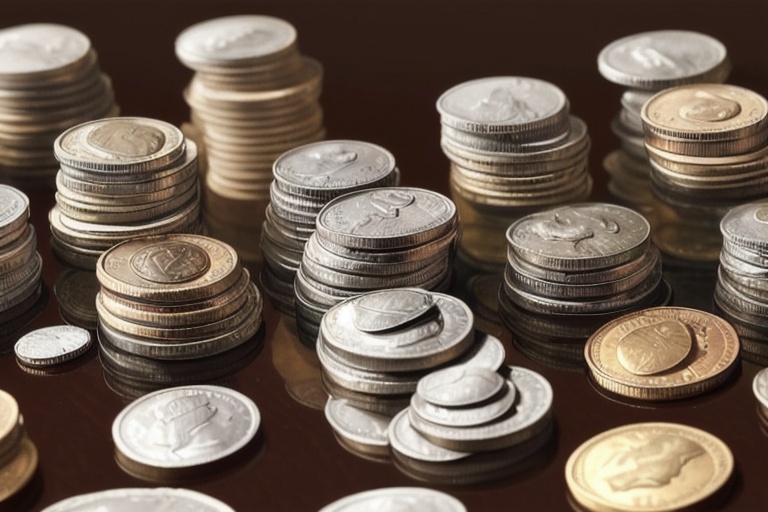The allure of coin collecting extends far beyond the aesthetic appeal of these small metal discs. Coins are intimate pieces of history, each telling a story of economic, political, and social times gone by. For collectors and enthusiasts, the thrill lies in unearthing coins that posses not only historical significance but also considerable monetary worth. Half dollars, in particular, are a fascinating subset of American coinage that can be immensely valuable. In this examination of coin values and collecting, we will dive into the world of half dollars and reveal their hidden potential, guiding you towards recognizing these treasures in your own collection or change jar.
The allure of coin collecting extends far beyond the aesthetic appeal of these small metal discs. Coins are intimate pieces of history, each telling a story of economic, political, and social times gone by. For collectors and enthusiasts, the thrill lies in unearthing coins that posses not only historical significance but also considerable monetary worth. Half dollars, in particular, are a fascinating subset of American coinage that can be immensely valuable. In this examination of coin values and collecting, we will dive into the world of half dollars and reveal their hidden potential, guiding you towards recognizing these treasures in your own collection or change jar.
Understanding Coin Value
Before we explore the specific coins that could enhance your collection's worth, let's consider the factors that attribute value to a coin. Rarity stands as a primary determinant; coins produced in limited numbers or possessing unique error markings often command higher prices. The physical condition, or grade, of a coin is another critical aspect — collectors prize coins with minimal wear and clear, sharp details. Finally, metal composition plays a role; for instance, silver half dollars struck before 1971 inherently hold value due to their precious metal content, often surpassing their nominal face value.
Distinguished Half Dollars to Seek
The Cream of the Crop: 1796 to 1839 Half Dollars
The annals of American coinage are graced with particular half dollars that have reached staggering value at auction. Consider the 1796 16 Stars Half Dollar, which has fetched up to $1.8 million due to its scarcity and age. Not far behind is the 1794 Flowing Hair Half Dollar, a short-lived design with an auction record matching the 1796's highest bid. The 1797 Half Dollar also makes the list, with less than 400 remaining from the original mintage and an impressive auction value of $1.56 million.
Mid-nineteenth-century half dollars similarly attract attention; the 1838 and 1839 Proof Half Dollars, with minuscule mintages intended for presentation rather than circulation, have commanded prices of $763,750 and $299,000 respectively in recent sales.
The Iconic Kennedy Half Dollar: A Modern Gem
A more contemporary numismatic icon is the Kennedy Half Dollar. Released shortly after President John F. Kennedy's assassination in 1964, these half dollars originally contained 90% silver, making them both sentimental and intrinsically valuable. The inaugural issue from 1964 is especially prized if found in superb condition and has seen sales reach up to $108,000. For those minted from 1965 to 1970, the silver content was reduced to 40%, but they still hold more value than later clad issues devoid of the precious metal.
While Kennedy half dollars minted after 1971 might not be as valuable due to the absence of silver, it is always worth examining these coins, especially if they are in an uncirculated state or exhibit unique characteristics.
Tips for Spotting Valuable Coins
To embark on this numismatic treasure hunt, one must refine their ability to discern the potentially valuable from the ordinary. Key factors to scrutinize include:
- Date and Mint Mark: Older coins typically carry more value, making the mint mark and the year it was struck essential points of evaluation.
- Condition: Examine coins for detail clarity and signs of wear. A coin in pristine condition has a significantly higher chance of being valuable.
- Silver Content: Identifying half dollars minted before 1971 provides instant value due to their silver content irrespective of their numismatic value.
In addition to inspection, staying informed through trusted online resources, such as LoveToKnow.com, can expand your knowledge and enhance your collecting strategies.
Embracing the History in Your Hands
Half dollars encapsulate the sophisticated aspects of coin collecting: history, beauty, and value. From the elusive proofs of the early 19th century to the illustrious Kennedy series, these coins provide a window into the past that can be both personally rewarding and financially beneficial. Whether you are a seasoned collector or a newcomer to the field, recognizing the value inherent in these half dollars can transform an everyday hobby into a venture of discovery and investment.
In conclusion, the pursuit of valuable half dollars is a multifaceted journey that blends an appreciation for history with a sharp eye for detail. As we have highlighted, certain half dollars possess significant value that extends beyond their face value into the realm of treasured artifacts. The next time you come across a half dollar, remember the information shared here and take a moment to scrutinize it—you may indeed be holding a piece of numismatic legacy.
Information for this article was gathered from the following source.


